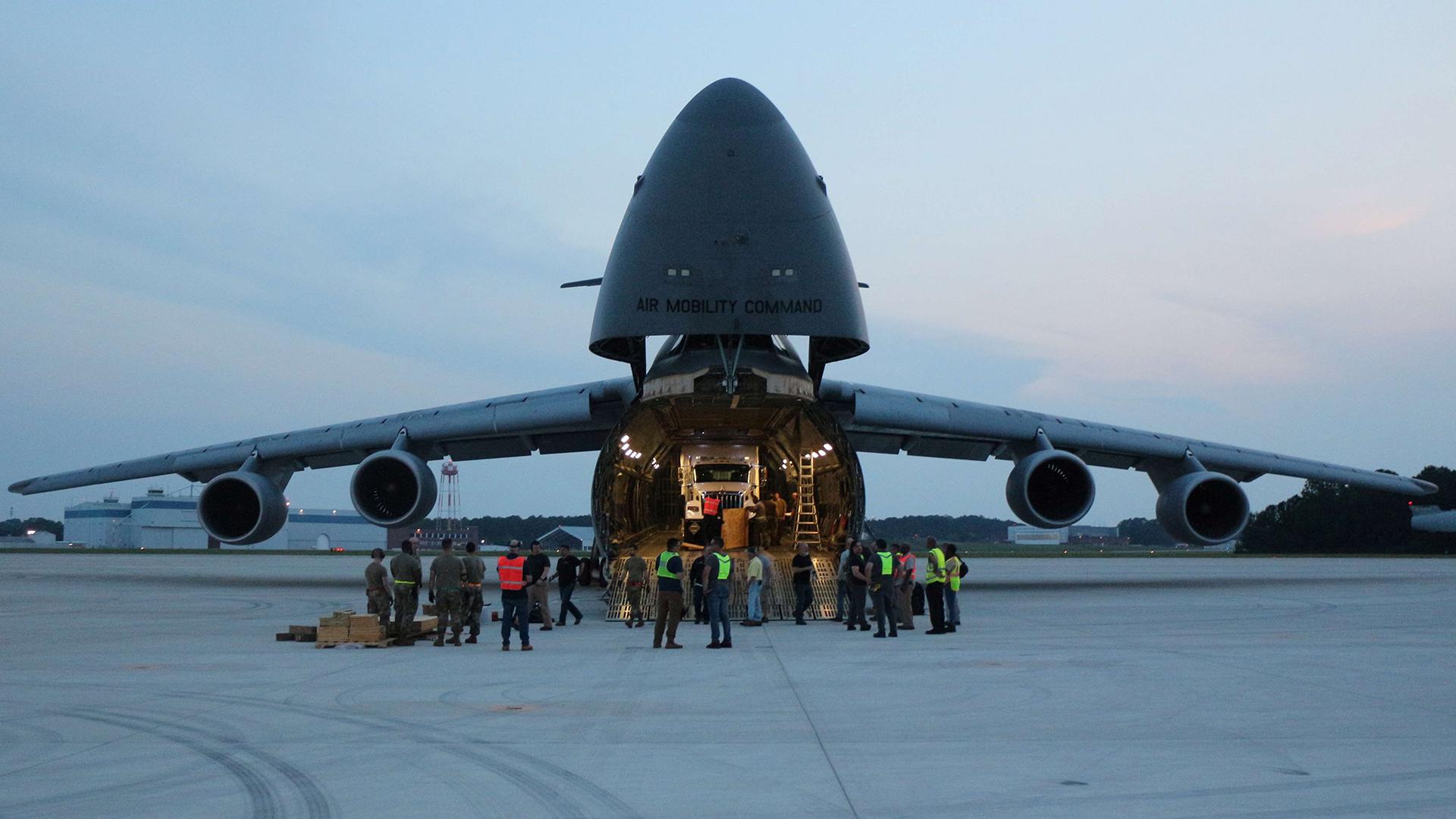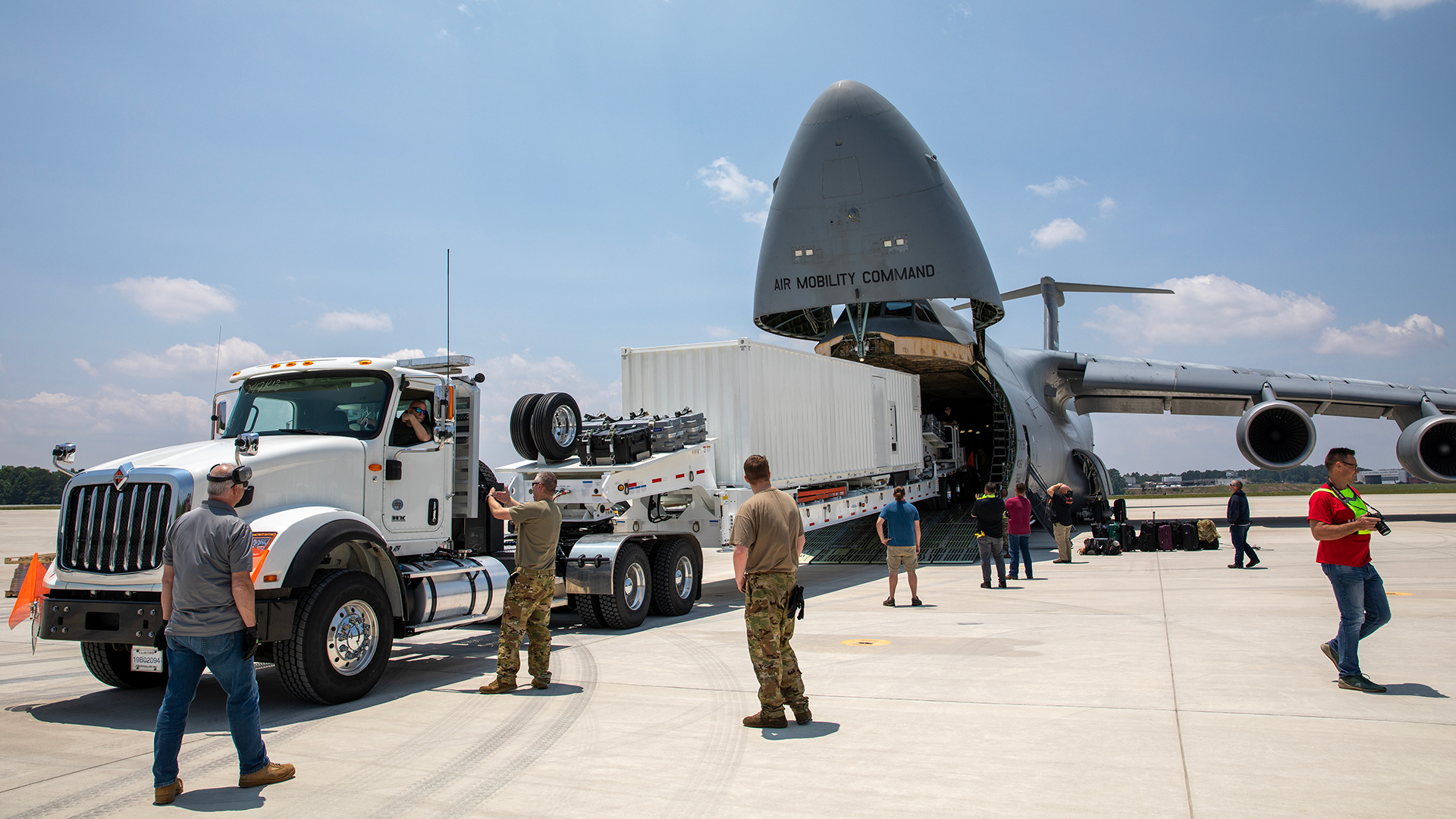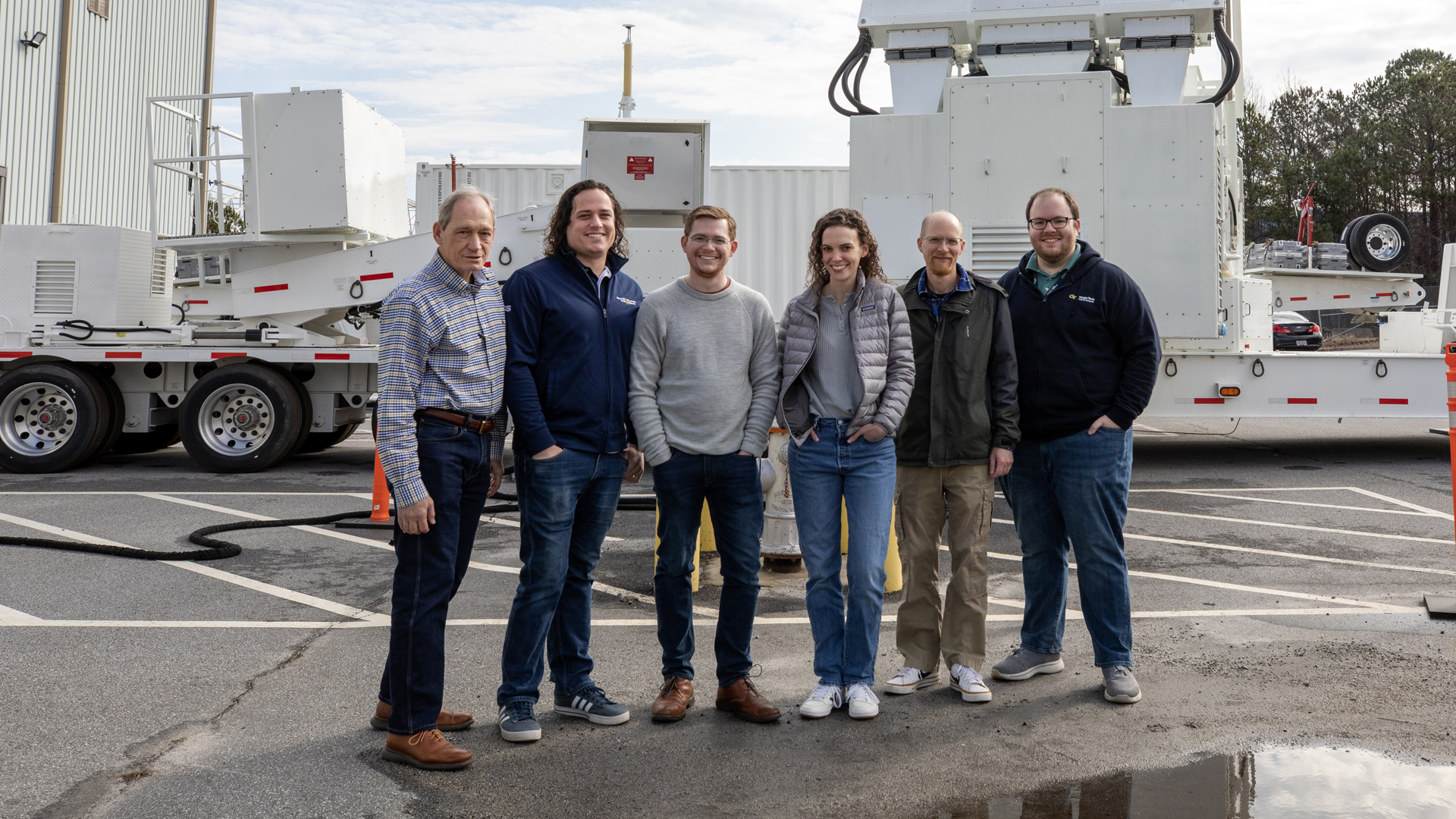Advanced Radar Threat System Helps Aircrews Train to Evade Enemy Missiles
Sep 20, 2023 —

Photo taken at dusk shows components of the ARTS-V1 system loaded into a C-5M Super Galaxy. (Photo: Vince Camp, GTRI)
U.S. pilots and aircrews will be safer flying into contested airspace thanks to training provided by a 142-ton threat simulator system that shows them how radars built to guide hostile surface-to-air missiles (SAMs) interact with warning systems on their aircraft.
The Advanced Radar Threat System Variant 1 (ARTS-V1) will be used on training ranges to simulate how defensive systems on fifth-generation aircraft engage with a variety of modern target engagement radar systems used by other nations. Gaining experience with the radars and practicing responses to the threats are part of training that helps aircrews improve survivability and increase combat effectiveness.
“Target engagement radars are directly coupled to hostile surface-to-air missile (SAM) batteries, so what we are doing with this simulated system is detecting and tracking targets just like the actual target engagement radar would do,” said W. Jeffrey Rowe, a senior research engineer and the Georgia Tech Research Institute (GTRI) director for the U.S. Air Force project. “It is designed to engage the best aircraft the U.S. has and help train their crews to protect themselves under highly realistic conditions.”
The system, which was built by GTRI for the ARTS-V1 Program Office at AFLCMC/HBZ, uses an electronically steered phased array that can simulate the operation of real threat radar systems.
Carried on two large tractor-trailers, the system is designed to be moved around ranges as needed to provide training on conditions aircrews can expect to encounter. The full system can be hauled by road or flown aboard Air Force transport aircraft. The first ARTS-V1 system was delivered to the Air Force in June 2023, and GTRI is currently under contract to build two additional systems.
Pilots and aircrews that train with the ARTS-V1 will first be looking to detect its presence, based on signals the system is sending out. The simulator can operate on a wide range of frequencies and with different waveforms, rapidly changing them to challenge the radar warning systems in the aircraft. “There are specific waveform modes that are meant to be hard to detect,” Rowe noted.
Once an aircrew detects that they are being tracked by ARTS-V1, they must quickly decide how to protect themselves from the missiles that could then be fired at them. Practicing response tactics on a friendly training range under a broad range of conditions will help aircrews respond better in real combat situations.
“When they are flying training missions with this radar on a training range, they will get a feel for the circumstances under which they’ll be able to detect it and know what the radar is doing,” Rowe said. “They’ll be able to avoid it, or deal with it as they proceed with their mission.”
Beyond the three ARTS-V1 systems, GTRI is providing training for multi-person operator crews, technical support for the systems, and spare parts to ensure they continue to operate. Also included is construction of two system integration labs that will develop software for the radars – one at GTRI and the other at a New Jersey-based contractor.
The ARTS-V1 system is a follow-on to other threat simulator programs. GTRI has over 40 years of experience in threat system technical analysis, exploitation, and development of mobile, transportable, and fixed-site threat air-defense simulators for the test and evaluation and training communities.
Weighing a total of more than 285,000 pounds, the ARTS-V1 system may be the largest system ever built and delivered by GTRI. The trailer housing the radar unit is 81 feet long, while the trailer housing the operator unit is more than 94 feet long.
Producing the first ARTS-V1 system required years of design work and involved more than 50 GTRI researchers and technicians. The entire team had a great appreciation of how important this work and these systems are to aircrews flying into harm’s way.
“When crews take off on a mission, they have an electronic order of battle brief that shows where threats are expected to be,” Rowe said. “This training will help them fly in, accomplish their mission, and fly back out.”
Writer: John Toon (john.toon@gtri.gatech.edu)
GTRI Communications
Georgia Tech Research Institute
Atlanta, Georgia USA
The Georgia Tech Research Institute (GTRI) is the nonprofit, applied research division of the Georgia Institute of Technology (Georgia Tech). Founded in 1934 as the Engineering Experiment Station, GTRI has grown to more than 2,900 employees, supporting eight laboratories in over 20 locations around the country and performing more than $940 million of problem-solving research annually for government and industry. GTRI's renowned researchers combine science, engineering, economics, policy, and technical expertise to solve complex problems for the U.S. federal government, state, and industry.

Components of the ARTS-V1 system are loaded on a C-5M Super Galaxy for delivery to the Air Force. (Credit: Sean McNeil, GTRI)

More than 50 GTRI researchers and technicians worked on the ARTS-V1 system. Shown with the system are six members of that team. (Credit: Sean McNeil, GTRI)
(Interim) Director of Communications
Michelle Gowdy
Michelle.Gowdy@gtri.gatech.edu
404-407-8060




